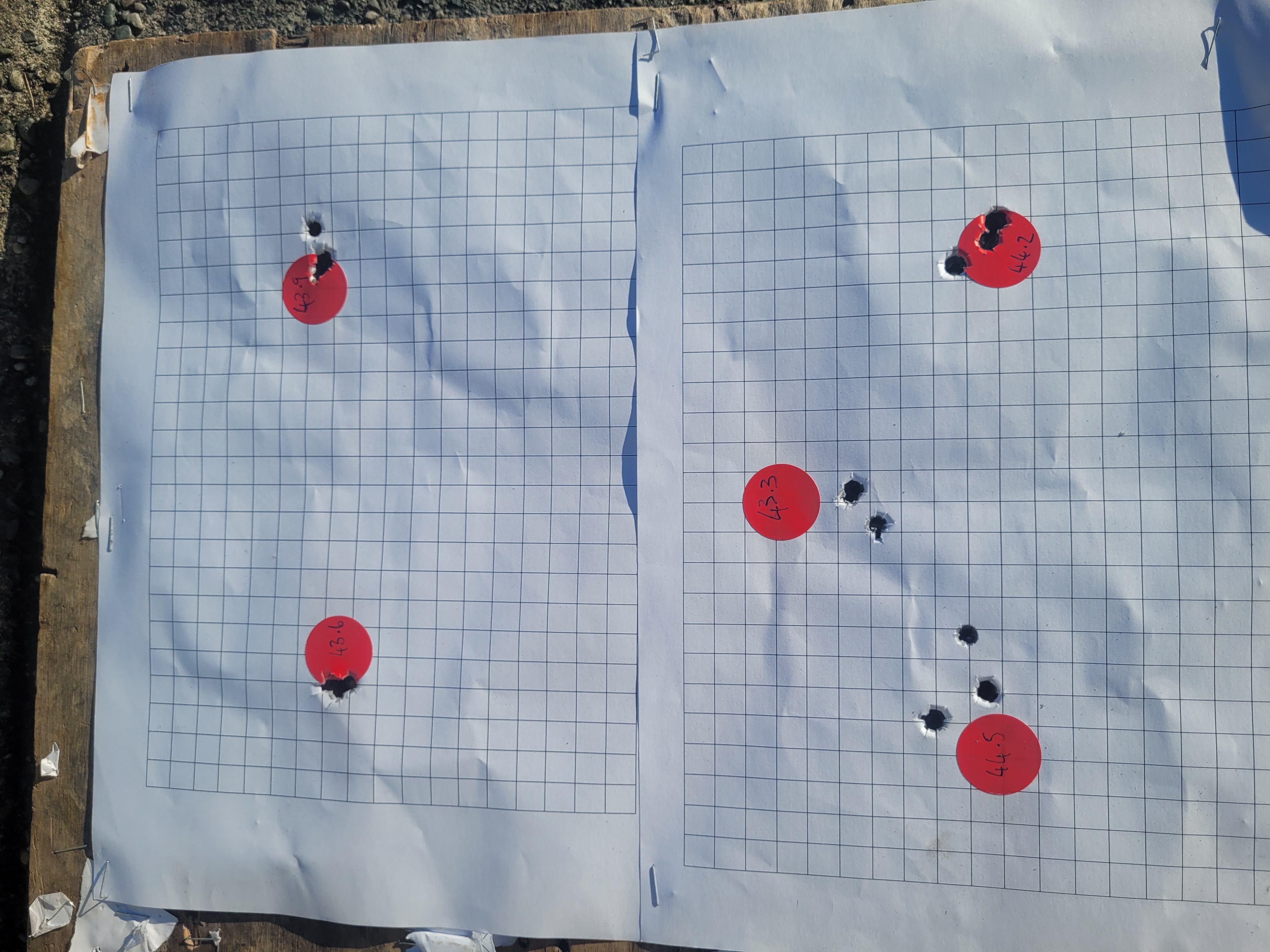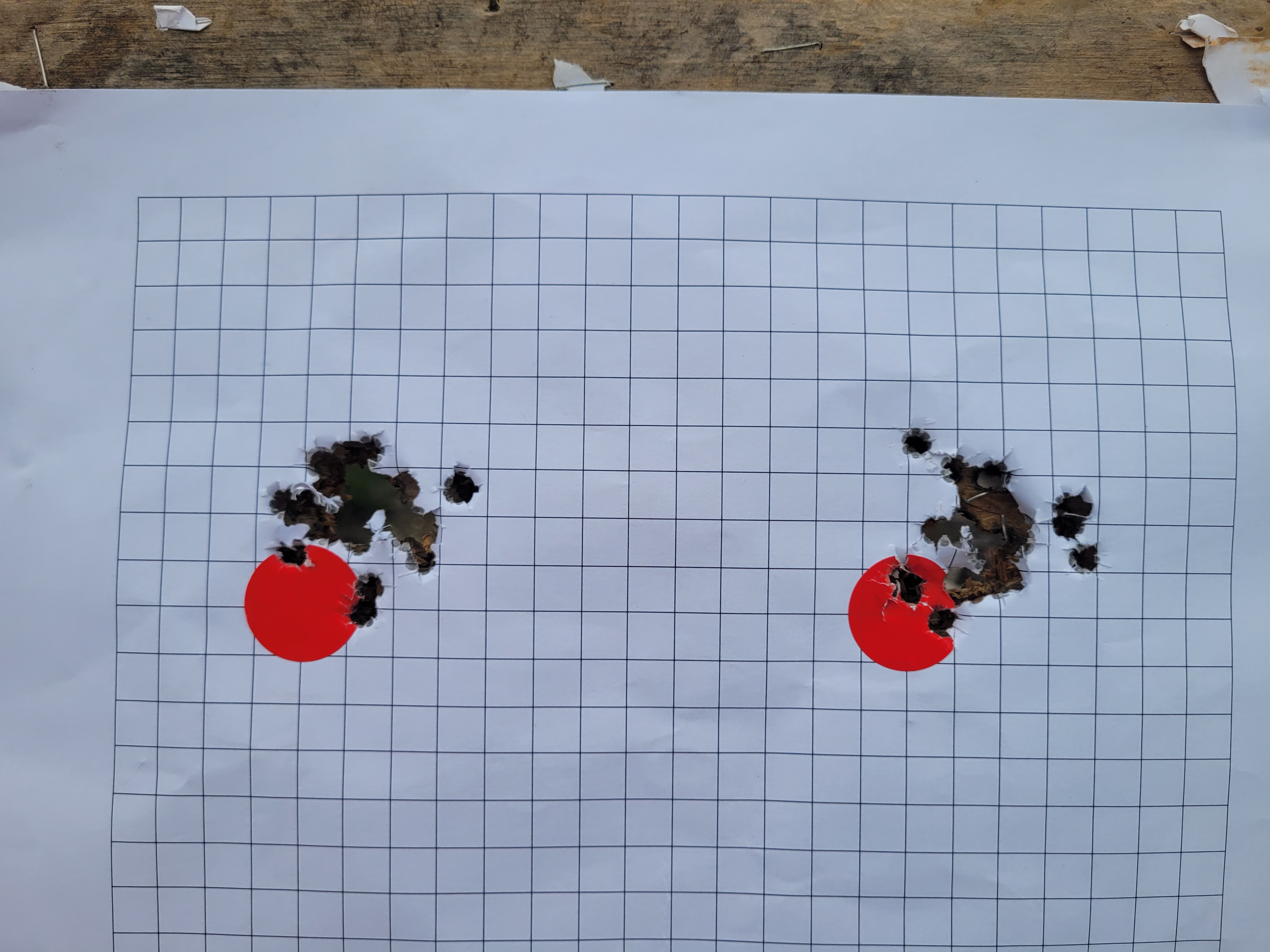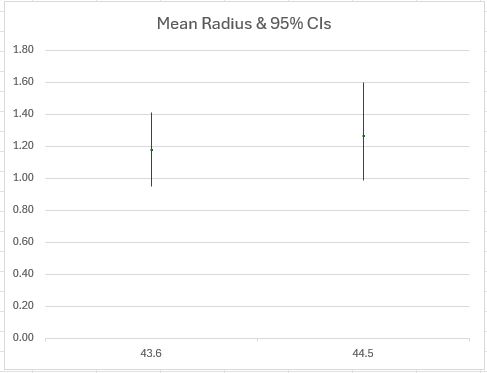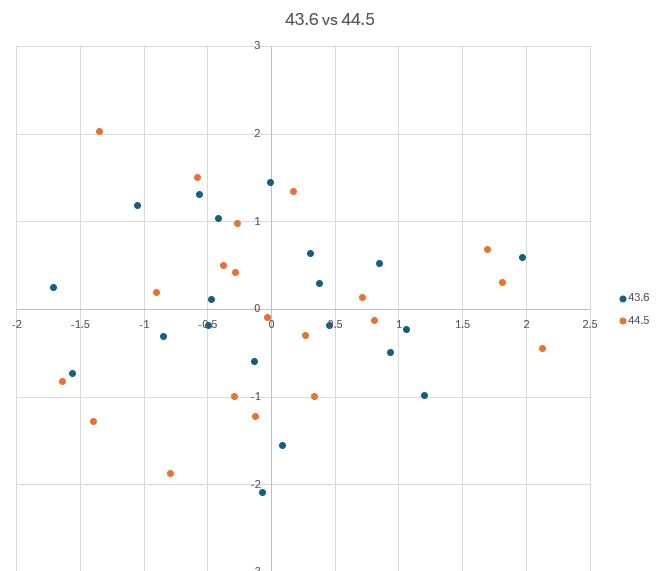A conventional approach to load development is:
1. Select a powder and projectile that appear suitable
2. Identify the OAL or comparator length to the lands
3. Load a series of rounds in increasing increments, generally .3 or .5 grain, generally 3 rounds at each increment - from some point up to around or above book max charge
4. Shoot these
5. Identify the "best" load that meets velocity goals - assessment of best based on group size, velocity SD, or a combination of the 2
6. Load more rounds to confirm the result
7. Go back to the range, shoot again, start trying to "fine tune" when the confirmation loads do not meet the same level of performance as the initial test
This is the way that I was taught to develop a load, and this is the way that many of us do it. But is it effective and efficient?
I wanted to test whether this process works. Does this process allow us to select the "best" powder charge for our load?
The rifle used for this test is a Howa 1500 with a trueflite barrel, chambered in .260Rem, 1:8 at 19 inches or so.
Brass Lapua, powder 2209, primers Fed210GMM, bullet Sierra 142gr SMK.
Rounds loaded to 2.85" OAL - arbitrarily selected to fit the mag.
I loaded 3 rounds at each increment from 43.3gr to 44,5gr (book max), then shot at 100 metres from a bipod and rear bag, with some cooling the barrel between shots (to keep to the conventional approach).
Shooting these gave the following results:
All loads met my target velocity window (over 2600fps)
The usual approach would likely be to select the load at 43.6 grains, as it is the tightest group, and the velocity SD indicated is extremely good.
However, we know that 3-shot groups are poor indicators of overall precision (see recent threads).
So I selected 43.6 as the best charge weight indicated - and 44.5 as the WORST charge weight indicated by group size.
I then loaded 20 of each. These were shot in alternating order, 5 rounds at a time, to minimise shooter fatigue or barrel fouling effects. Rounds were shot at the same range and the same rest as before, with barrel somewhat cooled between groups.
This gave the below results:
43.6gr on the left, 44.5gr on the right.
Indicatively, you might still feel that the load at 43.6gr is still slightly "better" as it has a slightly smaller group size. However, group size is not a very good predictive measure as it only takes into account the 2 most distant points in the dataset and ignores all the others - mean radius and the SD of mean radius is a more useful measure - this describes the "average miss distance" and the variability of that average.
In the case of these 2 loads with 20rd groups, the mean radii are 1.17cm (SD 0.5) and 1.27cm (SD 0.6) respectively.
This might still lead us to think that the 43.6gr load is slightly better. It is informative to note that across a larger sample size, the SD of the velocity has substantially changed from that recorded with 3 shots - and the SD and ES of velocity are functionally identical between these charge weights.
Statistically, with data that is distributed normally, we can calculate limits within which we can confident, to any specified level, of our mean value, based on the standard deviation and the sample size. If these confidence intervals for 2 different mean values overlap - there is no statistical difference.
I have calculated this for these 2 groups for the 95% confidence level and plotted the results - see below.
In statistical terms, there is no significant difference between the 2 charge weights. It is helpful at this point to overlay the 2 groups visually.
Really, there is no practical visual difference. The measures used have a poor robustness to outliers, and the 44.5gr load shows one minor outlier. I would expect that with a larger sample size, say another 10 - the apparent differences in mean radius and group size would diminish further. 30 is often considered a sensible minimum sample size in statistics, so why 20 round groups here? Practical reasons - components are expensive, and shooting/loading takes time. I may expand this data set further in future.
Conclusion: I have come closer to demonstrating that the 2 different powder charges produce the same level of precision rather than one being better than the other.
The implication is that different powder charges may not actually produce different levels of precision in your system. You may be wasting time, effort, energy and components testing in this way - it may be that no matter what powder charge you select, the end result with regards to precision (and velocity consistency) will be identical.
I suggest a simpler and more efficient approach -
1. Define your requirements - what level of precision and velocity do you require? This requires sensible calibration of expectations - chasing smaller groups than most rifles can produce, and more speed than your chosen cartridge can generally produce, is perhaps not well-aligned to reality. Book max speed minus 15-50fps per inch for your actual barrel length is perhaps a good indicator of a realistic expectation for speed.
2. Select the most appopriate powder and bullet based on reasonably wide research, using good quality components
3. Load 10rd at a powder charge (within book data) that you predict will give the velocity target you'd like. It will be easier to be more precise in this estimate with more modern cartridges with lower variability in data. I suggest using more modern cartridges.
4. Load your COAL to be seated off the lands somewhere, and fit in your magazine. Forget about it.
4. Shoot to test
5. If velocity is in your target range, and precision meets your requirements, you are done.
If you have realistic expectations, use good components, and use book data wisely you should be done. However,
6a. If precision does not meet your requirements - try a different powder or bullet
6b. If velocity does not meet your requirements - if you have no pressure signs or are below book max, adjust powder charge up an amount calculated to meet your target velocty. E.g. .223 seems to increase about 12fps per 0.1gr of 2206H.
6c. If velocity does not meet your requirements - if you have pressure signs or are at book max - try a different powder
6d. If velocity and precision meet your requirements but you have pressure signs - reduce your powder charge or try a different powder.
Welcome guest, is this your first visit? Create Account now to join.
Welcome to the NZ Hunting and Shooting Forums.
Search Forums
User Tag List
Results 1 to 15 of 191
Threaded View
-
01-07-2024, 08:04 PM #1
Testing a conventional approach to load development
Similar Threads
-
Load development in the SI
By Strider B in forum Reloading and BallisticsReplies: 21Last Post: 02-09-2020, 09:31 AM -
A novel approach to Load Development
By Puffin in forum Reloading and BallisticsReplies: 2Last Post: 16-08-2018, 11:36 AM -
General approach to powder selection for a new load
By MGNZ in forum Reloading and BallisticsReplies: 9Last Post: 28-11-2017, 03:29 PM -
Load development
By Cartman in forum Reloading and BallisticsReplies: 8Last Post: 30-07-2015, 10:42 PM -
OCW Load Testing
By The Bloke in forum Reloading and BallisticsReplies: 44Last Post: 20-08-2014, 09:47 PM
Tags for this Thread
Welcome to NZ Hunting and Shooting Forums! We see you're new here, or arn't logged in. Create an account, and Login for full access including our FREE BUY and SELL section Register NOW!!




 268Likes
268Likes LinkBack URL
LinkBack URL About LinkBacks
About LinkBacks













 Reply With Quote
Reply With Quote


Bookmarks